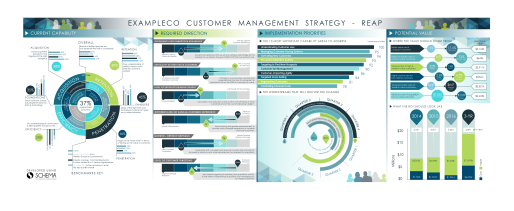It goes without saying that if your organisation pledges to become more customer-centric, you need to innovate your business model through a customer-centric lens. Customer-Centricity is all about the organisations ‘way of work’ or the ‘business system’ that enables the business to design and to deliver a unique, distinctive and consistent customer experience in order to Acquire, Retain and Develop targeted customer Efficiently. An organisation seeking to develop customer-centric capabilities must be willing and able to change its organisation structure, its measures and its employee and distribution incentives to focus on long term business success.
The design of a customer-centric strategy requires an organisation to deeply understand its current customer-centric capability (its departure point on the transformational journey), the nature of customer-centricity to which it aspires, the action and implementation priorities to bridge the gap between the current and the ‘to be’ state as well as the business benefit (financial uplift) derived from this improved level of customer centric capability.
This infographic helps explain the core components of the transformational journey and the customer-strategy, and is based upon the SCHEMA Customer Management Framework which is the methodology we use to drive customer-centric transformation




